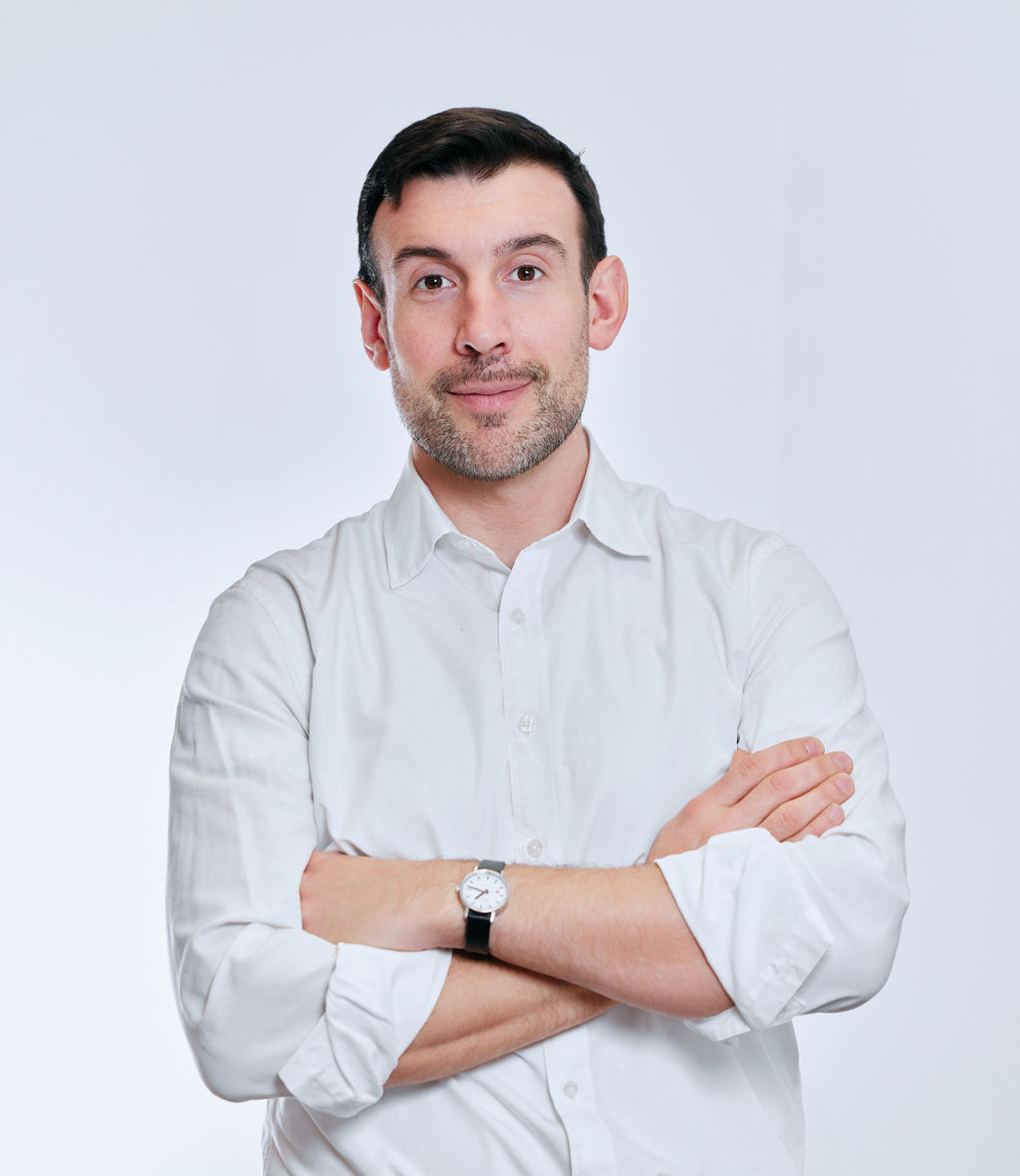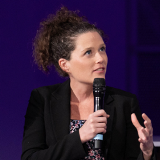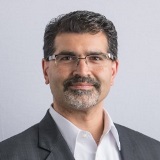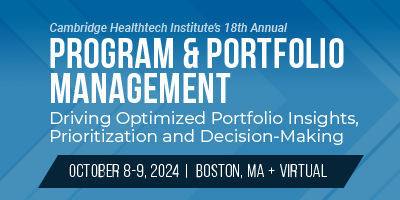Program & Portfolio Management
プログラム・ポートフォリオ管理
最適なポートフォリオの考察・優先順位付け・意思決定の促進
10月8〜9日 (EDT)
10月8日 火曜日
Registration and Morning Coffee7:45 am
Organizer's Welcome Remarks8:45 am
MORNING MEET & GREET ICEBREAKER
PORTFOLIO MANAGEMENT STRATEGY AND PROCESSES
Networking Meet & Greet
Michael Ferrante, Executive Director, Business Analytics, Global Regulatory Affairs & Clinical Safety, Merck
Jumpstart your conference experience with a lively morning speed networking! This informal networking session is the perfect chance to meet fellow participants and connect with your conference peers right from the start. Grab a cup of coffee, engage in conversations, and kick off the conference with a bang. Don't miss out on this fantastic opportunity to make new connections, share insights, and lay the groundwork for a memorable conference journey.
Transforming from a Distributed to a Centralized Portfolio Management Function: Considerations and Lessons Learned
 Stephen Cho, PhD, Senior Vice President & Head, Portfolio Strategy & Analytics, Strategy & Growth, Novartis
Stephen Cho, PhD, Senior Vice President & Head, Portfolio Strategy & Analytics, Strategy & Growth, Novartis
As Novartis transformed to a focused, pure-play innovative medicines company, portfolio management was consolidated across Research, Development, and Commercial to build lasting impact and achieve long-term business success. Since mid-2022, we have focused on building a stronger, focused pipeline, streamlined enterprise governance, centralized long-term revenue forecasts and valuations, and created an aligned strategic framework. Key learnings include importance of change management, flexibility, and streamlined processes and systems.
The Partnership between Decision Sciences and Project Management to Enable Decision Quality in Drug Development at Eli Lilly
 Charles Persinger, Executive Director, R&D Strategy & Decision Sciences, Eli Lilly and Company
Charles Persinger, Executive Director, R&D Strategy & Decision Sciences, Eli Lilly and Company
Decisions in drug development have a substantial influence on the outcome of individual projects and the Research and Development portfolio. Lilly Decision Sciences and Project Management organizations partner to deliver Decision Quality on decisions across Research and Development and Lilly Research Labs has won the Raiffa-Howard Award from the Society of Decision Professionals for achieving Organizational Decision Quality. This presentation will discuss what roles the Decision Sciences experts and Project Managers take and what approaches are put in place in those organizations to deliver Decision Quality for individual projects and the portfolio.
Coffee Break with Exhibit Viewing10:25 am
Case Study: The Intention and Reality of Leveraging External Data to Inform Project and Portfolio Decisions
 Elayne Ko, Director, Portfolio Decision Sciences, GSK
Elayne Ko, Director, Portfolio Decision Sciences, GSK
This presentation outlines the intention of waiting for external clinical data prior to investment decision-making. An illustrative example-including an overview of the quantitative inputs needed to generate outputs and insights-is used to frame the decision of invest now or invest later pending external data read-out. While leveraging external data may appear appealing, the presentation will review potential challenges to the decision alternative of waiting.
Usage of AI to Optimize Opportunity and Risk in Portfolio Management
 Ivan Kugener, VP & Head Global Portfolio Mgmt, Valuation & Analytics, EMD Serono
Ivan Kugener, VP & Head Global Portfolio Mgmt, Valuation & Analytics, EMD Serono
Over the past 5 years we have explored areas where AIML can be applied to improve decision science in healthcare R&D. We will review our journey with highs and lows, share pros and cons and where we see applicability now and for the future through very practical case studies (from AIDD to indication ideation, to PTRS prediction and development strategy optimization as well as other less expected areas of interest).
Networking Luncheon11:55 am
PORTFOLIO PRIORITIZATION METHODOLOGIES
Portfolio Prioritization in the Real World
 Gregory Wayne, PhD, Head, Decision Sciences Group, AbbVie, Inc.
Gregory Wayne, PhD, Head, Decision Sciences Group, AbbVie, Inc.
There are several theoretical approaches to portfolio prioritization, based on value metrics, costs, and pareto curves. In the real world within the pharma industry, prioritization needs to align with multiple stakeholders who have different priorities, and to address multiple constraints. A framework will be presented that addresses these limitations and provides transparency in order to make tradeoffs within the portfolio.
FIRESIDE CHAT: Comparing Alternative Approaches to Portfolio Prioritization, Benefits, and Trade-Offs
 Leslie Lippard, Senior Director, Portfolio Analytics, Alnylam Pharmaceuticals
Leslie Lippard, Senior Director, Portfolio Analytics, Alnylam Pharmaceuticals
 Charles Naaman, Vice President, Global Portfolio & Project Management-Oncology, AstraZeneca
Charles Naaman, Vice President, Global Portfolio & Project Management-Oncology, AstraZeneca
 Charles Persinger, Executive Director, R&D Strategy & Decision Sciences, Eli Lilly and Company
Charles Persinger, Executive Director, R&D Strategy & Decision Sciences, Eli Lilly and Company
 Gregory Wayne, PhD, Head, Decision Sciences Group, AbbVie, Inc.
Gregory Wayne, PhD, Head, Decision Sciences Group, AbbVie, Inc.
Explore alternative portfolio prioritization methods and strategies. Discuss tactics to align portfolio prioritization with short- and long-term corporate goals. Uncover how alternative strategies can be leveraged to foster resilience, mitigate uncertainties, and bolster innovation in pharmaceutical portfolio management, paving the way for more robust and adaptable pipelines.
 Level up Your Strategic Portfolio Decision-Making with AI
Level up Your Strategic Portfolio Decision-Making with AI
 Edoardo Madussi, Head of Business Development, Intelligencia AI
Edoardo Madussi, Head of Business Development, Intelligencia AI
Why AI needs to be part of your toolkit and how it fits into current workflows for strategic portfolio planning.
The need for purpose-built data for transparent and accurate probability of success (PoS) assessments to enhance decision-making.
Real-world scenarios and applicable use cases where AI-driven PoS can be leveraged to your advantage.
Refreshment Break with Exhibit Viewing3:00 pm
Analyzing Ten Years of Clinical Trial Data with Causal Inference and Discovery
 Gary J. Summers, PhD, Director Oncology Portfolio Decision Sciences, Strategy Portfolio Management, GSK
Gary J. Summers, PhD, Director Oncology Portfolio Decision Sciences, Strategy Portfolio Management, GSK
Traditional statistics analysis discovers correlations while yielding biased results. New techniques, called causal inference and discovery, identify causal relationships. Using these techniques, inspired by how statistics transformed baseball (see the movie Moneyball), we analyze ten years of clinical trial data to identify opportunities to improve trial design and PTRS.
BREAKOUT DISCUSSIONS (IN PERSON ONLY)
Breakout Discussions are informal, moderated discussions, allowing participants to exchange ideas and experiences and develop future collaborations around a focused topic. Each discussion will be led by a facilitator who keeps the discussion on track and the group engaged. To get the most out of this format, please come prepared to share examples from your work, be a part of a collective, problem-solving session, and participate in active idea sharing. Please visit the Breakout Discussions page on the conference website for a complete listing of topics and descriptions.
TABLE 1: Project Prioritization Frameworks for Investment Decision Making and Allocating Resources
Elayne Ko, Director, Portfolio Decision Sciences, GSK
Gregory Wayne, PhD, Head, Decision Sciences Group, AbbVie, Inc.
- What analysis do you use to evaluate investments and resource planning?
- How do you prioritize resources when evaluating both internal and external projects against each other?
TABLE 2: Achieving The Right Balance Between Top-Down (Strategic & Enterprise) Driven and Bottom-Up (Asset-Focused) Driven Decision Making
Leslie Lippard, Senior Director, Portfolio Analytics, Alnylam Pharmaceuticals
- What processes do you have for making asset-level decisions and for making portfolio-level decisions?
- How does optimizing the asset level impact the portfolio level, and vice versa?
- What are the best practices that allow companies to achieve balance at both the asset-level and the enterprise level, at a reasonable level of time and energy spent on analytics and oversight?
TABLE 3: Building Partnerships between Project Management, Resource Management, Functional Management, and Finance to Drive Productivity
Stephen Cho, PhD, Senior Vice President & Head, Portfolio Strategy & Analytics, Strategy & Growth, Novartis
Michelle Shogren, CEO & Owner, Innovate in What You Do!; former Senior Director of Innovation, Pharma R&D Clinical Operations, Bayer
Joe Stalder, Vice President, Program Management, Zentalis Pharmaceuticals
- What are the pitfalls to avoid when trying to develop partnerships internally?
- What is an “engagement model” to use to establish trust, uncover real resource needs, and maintain a strong relationship with each department?
Networking Reception with Exhibit Viewing5:00 pm
Close of Day6:00 pm
10月9日 水曜日
Registration and Morning Coffee7:45 am
COMBINING PROCESSES AND ANALYTICAL INSIGHTS IN DECISION-MAKING
Mirror, Mirror, on the Wall-Is This a Good Deal? Navigating Bias(es)
 Michael Myers, PhD, Associate Vice President, LRL Project Management-Due Diligence, Eli Lilly and Company
Michael Myers, PhD, Associate Vice President, LRL Project Management-Due Diligence, Eli Lilly and Company
In helping to support decision making on complex opportunities, setting the table for the decision should include some elements that serve as mitigation for any potential bias. Consistently leveraging a process OR building one to generate an aligned set of key inputs can sometimes be challenging. What are the common and not-so-common biases that might be at play for your opportunity? What processes do you have at your disposal (or may need to set up) to leverage? What resources might you leverage to up your own game?
Firm Boundaries and Incentives: Evidence from the Biopharmaceutical Industry
 Christopher Larson, Tilburg University
Christopher Larson, Tilburg University
It is well-documented that in-licensed drug projects have higher likelihood of approval than projects developed internally in the biopharmaceutical industry. Using a granular dataset, we show that this result holds when controlling for possible sources of heterogeneity across drug projects. Next, we posit and show that the success rate difference is partly driven by agency problems within companies. Namely, internal R&D teams may bring forward less promising drug projects due to monetary and career incentives. We also show that this mechanism is distinct and coexists with selection effects and contractual inflexibility mechanisms proposed in previous literature.
Coffee Break with Exhibit Viewing9:20 am
Strategic Frameworks for Successful Drug Development: Integrating Target Product Profiles and Stage-Gate Governance
 Saeid (Sam) Yazdani, Principal Consultant, Yazdani Consulting; former Vice President of Portfolio & Program Management at Caribou Biosciences
Saeid (Sam) Yazdani, Principal Consultant, Yazdani Consulting; former Vice President of Portfolio & Program Management at Caribou Biosciences
This session will explore strategic frameworks that drive successful drug development. We will delve into the Target Product Profile (TPP), which delineates a drug's ideal characteristics, serving as a strategic blueprint to align development and regulatory objectives. It ensures a clear vision from concept to market. Additionally, we'll examine the Stage-Gate Governance model, which structures drug development into distinct phases, with decision points or "gates" to evaluate progress. It promotes systematic review, risk management, and efficient resource utilization, enhancing project success.
Right-Sizing Your Project Management Methodology to Match Company Maturity: Lessons Learned in Small and Large Biopharmas
 Joe Stalder, Vice President, Program Management, Zentalis Pharmaceuticals
Joe Stalder, Vice President, Program Management, Zentalis Pharmaceuticals
Panelists will address differences in approaches and lessons learned in managing R&D projects at large vs. small biopharma companies. Given available resources and pressures from internal and external stakeholders, which trade-offs are made when managing R&D projects? What are the differences in team structures, governance models, and decision rights? Which advantages does a large company have over a small company, and vice versa?
 Kundini Amin, Head, Portfolio Leadership, Analytics & Insights (PLAI), Biogen
Kundini Amin, Head, Portfolio Leadership, Analytics & Insights (PLAI), Biogen
 Paul B. Cook, PhD, Principal, Bridging Solutions, LLC
Paul B. Cook, PhD, Principal, Bridging Solutions, LLC
 Alexander Rucci, Director, Project Management, Sumitomo Pharma America
Alexander Rucci, Director, Project Management, Sumitomo Pharma America
RAID Logs Are Stale; GRIDALL Is Fresh
 Joe Stalder, Vice President, Program Management, Zentalis Pharmaceuticals
Joe Stalder, Vice President, Program Management, Zentalis Pharmaceuticals
The RAID Log is a commonly used tool for capturing project information. However, it lacks key project information, does not link between key artifacts, and it does not allow for feedback loops that enable continuous improvement. The GRIDALL model offers a more comprehensive model for capturing project information. A PMO that uses the GRIDALL method will provide value to project teams by being more complete, connected, and continuous.
Luncheon Presentation (Sponsorship Opportunity Available) or Enjoy Lunch on Your Own11:35 am
Unlock the Power of Change: Elevate Your Leadership Journey
 Mary Lou Panzano, Founder and CEO, Panzano Enterprises LLC; former Vice President, Internal Communications, Bayer
Mary Lou Panzano, Founder and CEO, Panzano Enterprises LLC; former Vice President, Internal Communications, Bayer
 Michelle Shogren, CEO & Owner, Innovate in What You Do!; former Senior Director of Innovation, Pharma R&D Clinical Operations, Bayer
Michelle Shogren, CEO & Owner, Innovate in What You Do!; former Senior Director of Innovation, Pharma R&D Clinical Operations, Bayer
As a forward-thinking leader, you wield the power to orchestrate transformative change within your organization. Yet, amidst the dynamic landscape of progress, do you possess the essential toolkit to navigate inevitable challenges and conflicts, ensuring collaboration prevails over escalation? Join us for an engaging session where you'll uncover not only the five critical pillars of effective change management but also strategies for adept conflict resolution. Gain invaluable insights to steer your organization towards a future of innovation, resilience, and sustainable growth. Seize this transformative opportunity to elevate your leadership prowess and drive impactful change.
Employing AI to Increase R&D Productivity
 Mathilde Bryse, Head of R&D Strategy, Sanofi
Mathilde Bryse, Head of R&D Strategy, Sanofi
Sanofi, a pharmaceutical company of 100,000+ employees that develops medicines and vaccines, began a business transformation in portfolio management, leveraging artificial intelligence (AI) as a key accelerator. As part of our business transformation, we've co-developed a decision intelligence tool called PLai that correlates >1B data points in a single source of truth, and leverages AI to make recommendations from strategy to operations. We use AI predictions to challenge our internal view on key parameters.
Refreshment Break with Exhibit Viewing2:30 pm
BREAKOUT DISSCUSSIONS (IN PERSON ONLY)
Breakout Discussions are informal, moderated discussions, allowing participants to exchange ideas and experiences and develop future collaborations around a focused topic. Each discussion will be led by a facilitator who keeps the discussion on track and the group engaged. To get the most out of this format, please come prepared to share examples from your work, be a part of a collective, problem-solving session, and participate in active idea sharing. Please visit the Breakout Discussions page on the conference website for a complete listing of topics and descriptions.
TABLE 4: Balancing Internal R&D Investments and Resources with External Collaborations
Elayne Ko, Director, Portfolio Decision Sciences, GSK
Gregory Wayne, PhD, Head, Decision Sciences Group, AbbVie, Inc.
- What analysis do you use to evaluate investments and resource planning?
- How do you prioritize resources when evaluating both internal and external projects against each other?
TABLE 5: Applicability of AI within Project Decision-Making and Portfolio Management: Where and When would AI Be Relevant and Applicable
Mathilde Bryse, Head of R&D Strategy, Sanofi
Joe Stalder, Vice President, Program Management, Zentalis Pharmaceuticals
- Where have you seen application of AI in decision making and project management?
- At what specific areas and stages is AI likely to bring significant value?What potential pitfalls and roadblocks should teams be on the lookout for?
TABLE 6: Influencing, Initiating and Executing Organizational Change Management
Stephen Cho, PhD, Senior Vice President & Head, Portfolio Strategy & Analytics, Strategy & Growth, Novartis
Paul B. Cook, PhD, Principal, Bridging Solutions, LLC
Leslie Lippard, Senior Director, Portfolio Analytics, Alnylam Pharmaceuticals
- How do you identify sources of the organizations pain points?
- How to say “no” or “not now” to all of the great ideas and proposed projects
- What are the differences between project management and change management, and how do you integrate them to deliver positive outcome to the organization?
Simplifying Portfolio and Resource Management Processes in the Age of Analytics
 Michael Myers, PhD, Associate Vice President, LRL Project Management-Due Diligence, Eli Lilly and Company
Michael Myers, PhD, Associate Vice President, LRL Project Management-Due Diligence, Eli Lilly and Company
There has been an increased emphasis in leveraging advanced analytics across the scientific and business worlds. Sometimes our desire to test the latest tools and algorithms may overly complicate our approach or even the ability to make decisions based on the data we are collecting. Advanced analytics techniques, when applied effectively, can be leveraged to better evaluate and prioritize projects based on strategic objectives, risk factors, and resource constraints. Join this panel to discuss the changing analytics landscape, and explore best practices and lessons learned in deploying and leveraging analytics tools in prioritizing projects and resources.
 Melquiades de Jesus, Senior Director, R&D PMO Business Capabilities, Jazz Pharmaceuticals
Melquiades de Jesus, Senior Director, R&D PMO Business Capabilities, Jazz Pharmaceuticals
 Mathilde Bryse, Head of R&D Strategy, Sanofi
Mathilde Bryse, Head of R&D Strategy, Sanofi
 Leslie Lippard, Senior Director, Portfolio Analytics, Alnylam Pharmaceuticals
Leslie Lippard, Senior Director, Portfolio Analytics, Alnylam Pharmaceuticals
 Peter Ray, Vice President, Head of Portfolio Analytics, Novartis
Peter Ray, Vice President, Head of Portfolio Analytics, Novartis
Close of Program & Portfolio Management Conference4:45 pm
* 不測の事態により、事前の予告なしにプログラムが変更される場合があります。
アジェンダ・講演者・スポンサー更新
アジェンダ・講演者更新
アジェンダ・講演者更新
アジェンダ・講演者更新











